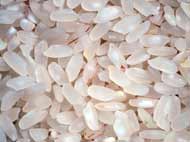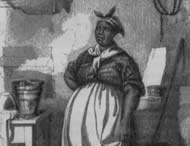Rice and Lowcountry Cuisine
The impact of rice on the Lowcountry is reflected in some of the earliest southern cookbooks, as well as modern Lowcountry cuisine. One of the earliest known Carolina cookbooks was compiled by Harriott Pinckney in 1770. She records recipes for rice bread and rice pies. The 1847 cookbook by Susan Rutledge includes 25 rice-based recipes for cakes, bread, soup, puddings, and pilau. In 1901, Mrs. Samuel Stoney compiled Carolina Rice Cook Book by gathering recipes from around the region. Her book contains 237 recipes for rice dishes. Sally Robinson published her well-known book Gullah Home Cooking the Daufuskie Way in 2003. In their 2006 cookbook, The Lee Bros. Southern Cookbook, Matt and Ted Lee offer nearly 20 rice recipes including Country Captain, red rice, oyster purloo, jambalaya, and Hoppin John. Chef Charlotte Jenkins of Mount Pleasant, South Carolina presents three generations of recipes in her cookbook Gullah Cuisine, By Land and By Sea. Chef Jenkins carries her diner guests back in time by using traditional seasonings in her food.
Intertwined with rice is the influence of African American cooks. Enslaved women were the principal cooks on most plantations throughout the region. They cooked for both the enslaved and planter families. Without a doubt, the African heritage of the plantation cooks influenced the flavors and styles of the food they prepared. And remember, it was not just rice and people that traveled across the Atlantic from Africa. African foods such as okra, egg plant, sesame, yams, and cow peas made the journey as supplies on the slave ships. Slaves likely saved and planted leftover seeds and tubers so they had familiar foods to cook. Gradually these foods made their way onto the planter’s table. Today they continued to be essential ingredients of Lowcountry cuisine.
Since the 18th century, rice has cut across cultural and economic boundaries in the Lowcountry. Everyone eats rice. In many households rice was and still is served at every meal. Today residents of the Lowcountry still enjoy red rice with their barbeque, Hoppin John at New Years, rice and gravy — rice just about any time!
How to Cook Rice
Many cooks consider cooking rice an art. Most southern cooks believe that rice cooked “correctly” is steamed so that every rice grain is separate.
Take a pint of rice well picked and Clean’d. Set on a saucepan (sic) with one Gallon of water and a handful of salt, when the water boils pit in the rice, about a quarter of an hour will boil it enough according to the quickness of the fire or by tasting it; but be sure to avoid stiring the rice after ‘tis in the saucepann (sic) for one turn with the spoon will spoil all. When ‘tis tender turn the rice into a sieve; when the water is quite draind (sic) off return it to the same pann (sic) and let it stand near the fire for an hour or more to be kept hott (sic) and if the process is well observed it will be white, dry, and every grain Separate.
Mrs. Blakeway, as recorded in Rect. Book. No: 2. Eliza Pinckney 1756




